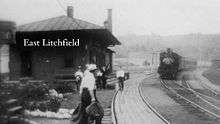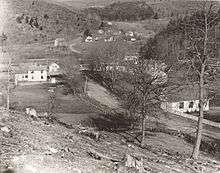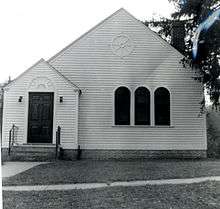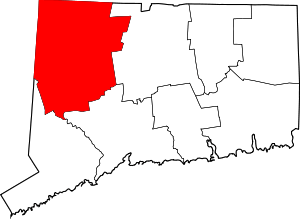East Litchfield Village, Connecticut
East Litchfield is an unincorporated village in the town of Litchfield, Litchfield County, Connecticut.
The village of East Litchfield sits at the crossroads of the highways that connect Waterbury and Torrington; Hartford and Litchfield and the Naugatuck River that connects communities from Bridgeport to Winsted. East Litchfield, like Bantam, Milton and Northfield are parts of the town of Litchfield and have been since the town was settled in 1721.
Over 3,000 years ago Native Americans found East Litchfield to be a hunting ground rich with wild game. They used the outcroppings of soapstone to make various vessels for food and drink. The area was also rich with quartz that was used for arrowheads and centuries later sent to Massachusetts for sandpaper production.
When Europeans settled in the area it became a community of farmers and mill workers. Naugatuck Valley Railroad built a depot in 1849 and extended the train to Winsted. The mills along the Naugatuck River were able to load their freight and passengers could disembark at East Litchfield and get a stage coach to Litchfield center where they could take their summer retreats. Harwinton Fair attendees would take the train to and from East Litchfield where they would catch the shuttle to the Fair Grounds.

Along the sides the Naugatuck River in East Litchfield were many mills; the Paige and Dains Paper Mill and Baldwin's Saw Mill were two. Ice was harvested from the Naugatuck River and stored in an icehouse built by the railroad company.
After the establishment of the depot East Litchfield had a hotel and restaurant (Scovill House), a post office, blacksmith shop, harness shop, livery service to Litchfield center, Ferncliff Farm with a store and cheese factory, Mrs. Mark's variety store across from the depot, a chapel, one-room schoolhouse, icehouses, a baseball field, lumber mill, grist mill, cider mill and a paper factory.

All of the above-mentioned business establishments disappeared after the depot closed; the chapel is still there and just a few of the original village homes.


The East Litchfield Chapel. The history of the Chapel begins in 1865, when the ladies of East Litchfield formed a Sunday school that met in the one-room 1790 schoolhouse. Sarah and Dwight Kilbourn, newly wed in 1866, purchased property and moved to East Litchfield. Sarah, a deeply religious woman was instrumental in the management of the chapel from the time of its inception to her death in 1938. Dwight, a Civil War veteran, historian, clerk of the county court, member of the school board, station master for the East Litchfield depot and leading member of the committee that created the Connecticut 2nd Heavy Artillery monument at Arlington Cemetery, led the effort to save the John Brown House (burned in 1918) in Torrington, CT and purchased the building that housed the first law school in Connecticut. By 1868, Hector Barber, a local citizen, had donated a small parcel of land (24 x 36 feet) next to his home and solicited money, materials and labor to build a Union Mission Chapel. The building would be plain, 24 x 36 feet in dimension and be built close to the street. The men of East Litchfield cut wood from their properties, had it milled locally, then set about to build themselves a chapel. The Ladies Sewing Society, that planned to meet in the new chapel, used their funds to decorate the interior. Seventeen years later (1885) an alcove and storage closets were added to the south wall. The ladies of East Litchfield put on oyster suppers to help pay for the improvement. Funeral services for Dwight C. Kilbourn were held at both the East Litchfield Chapel and the Litchfield Congregational Church in 1914. The Torrington Register proclaimed him to be the “Best Known Man in Litchfield County.” Mr. and Mrs. Kilbourn were prominent in Litchfield, East Litchfield and the chapel. The fifty-seventh annual reunion of the Second Connecticut Heavy Artillery; originally the 19th Connecticut Volunteer Infantry of the Civil War was hosted by Sarah Kilbourn (widow of Dwight Kilbourn) in 1922. The various events were held at the East Litchfield Chapel and the Kilbourn Home (next door.) The East Litchfield community prepared and served dinner to the veterans and their families; and provided entertainment in the form of patriotic songs—all in the chapel. A newspaper reporter from the Torrington Register attended and wrote an article recording the day's events, noting the generous help of the local citizens. By the mid 1920s the congregation of the East Litchfield Chapel included ninety percent of the community. In addition to religious functions, the chapel was a community gathering place. It was decided that the most economical way to gain space for preparing and serving meals would be to add an addition in the form of a walk-out basement with a wood-burning cook stove and a dry sink. Water would be brought in from nearby homes. In 1930, the adjacent landowners each donated a small portion of their land so that the basement could be dug out and walls erected behind the original building. All the work was to be done by members of the community. They created a new foundation and basement directly behind the chapel, rolled the building south and placed it on the concrete brick foundation, added an 8 x 28 foot vestibule to the front with stairs on the east side to access the basement. Three stained glass windows were placed on the front/north, one on the west side and two on the south side. The actual work started and ended in 1933. They were still raising money to pay for it in 1935. Evelyn Goodwin who was the Litchfield Town Clerk for over 60 years, remembered that the chapel was not for any particular denomination. “They would have the Trinity minister one week and the next the Congregational and the next week it might be the Methodist, but they used to have Sunday school, church services and Christian Endeavor meetings. When I was a little girl Mrs. Kilbourn was principal of the Sunday school and my grandmother Naser was a Sunday school teacher. We used to go with her on Sunday afternoons; she would hitch up her horse and wagon and we'd drive down and go to Sunday school.” When the East Litchfield community organized a volunteer fire company in the 1940s, meeting were held in the chapel while the fire truck was kept in a privately owned barn across the street. But when the firehouse was built (by members of the community on donated land) it became the community center with all the space and utilities that the chapel lacked. As new families moved into the area they maintained their relationships with churches from their former homes. With dwindling membership, the East Litchfield Mission Society offered the chapel as an incubator or starter home for a number of religious groups; as it continues to serve today. The current congregation, The Faith Bible Church, has been generous in sharing the building for occasional events. Just this May, Donald Iffland presented a program on the history of the chapel with 50 people in attendance. On August 18 two lifelong residents of East Litchfield, Janet and Richard Healy, renewed their wedding vows in the chapel with a full-house to help them celebrate their 60th wedding anniversary.
The Torrington Foreman, Torrington, Connecticut, 1949. UNITED COMMINITY SPIRIT: The East Litchfield Volunteer Fire Department. Little or no ballyhoo has accompanied two years of outstanding accomplishment in a neighboring town through united community spirit. So this is the story of the East Litchfield Volunteer Fire Department. First a little history. East Litchfield was a busy town many years ago, and until railroad came to Litchfield. Then the East Litchfield Depot was closed and the town became completely rural. World War II, however, caused the picture to change. New homes were built — the population increased. In fact, it even occurred to the Litchfield Civilian Defense Council that a trailer pump housed in East Litchfield might be a mighty handy piece of equipment to augment the fire protection from Litchfield. East Litchfield Community leaders were naturally very much interested in this proposal and agreed to assume responsibility for the trailer pump to secure better protection for East Litchfield's families and property. As disappointing as it may have seemed at the time, the trailer pump never did materialize. However, something more valuable was gained, for awakened to a community need, united effort to secure fire protection resulted. In January, 1947, East Litchfield residents met with Martin Iffland and Edward J. Wilson to discuss ways and means of reaching the objective. The response was so enthusiastic that by spring, the East Litchfield Volunteer Fire Department was duly incorporated, officers elected and the company formally launched. The Litchfield Fire Chief, representatives of other volunteer fire companies and Attorney Thomas F. Wall were most helpful in the organizing process. The Fire Department's membership had reached a total of 60. The organization completed, the next objective was a treasury. No time was lost for the entire community to go to work to raise needed funds. Volunteers worked with a will many a Saturday at the back-breaking job of collecting tons of scrap steel and iron — some of it secured from points as far away as New Hartford. Dances and card parties were sponsored and one person became the proud owner of a new car as a result of fund raising efforts. Cooperation was the keynotes in all of these activities, as every member helped in two or three capacities. And — during this time, the other half of the neighborhood — the half that sits on the other side of the breakfast table — decided that it should pitch in too. So the Ladies auxiliary was formed in April. Bakery sales, rummage sales and a highly successful auction sponsored by the ladies — contributed materially to both the treasury and to the morale of the department. And so, in July 1947 the trailer pump, that never did materialize, finally resulted in a second-hand American LaFrance 750 gallon pumper rebuilt to carry a 200-gallon water supply and 2,000 feet of hose, ladders, hand pumps, nozzles, a gasoline auxiliary pump and other equipment. Mr. Wilson generously made one of his barns available for a temporary fire house. Meanwhile, the officers of the company received instructions in fire-fighting methods from Captain Rougeot of Torrington and first aid instruction from Harold Lacore. After the equipment was available, regular weekly drills were instituted so that other members of the department could receive training. As it turned out, the equipment and the instruction came none too soon. That fall, forest fires broke out near the Torrington dump and spread towards East Litchfield and Litchfield. For three chilly nights, the East Litchfield Volunteer Firemen worked until the early hours helping to check the fires over a broad front. Thousands of gallons of water were pumped over the hills and the woods saving much of the forest and presenting the flames from reaching several homes in their path. The East Litchfield Company had proved its value to the community and at the same time, partially repaid the neighboring fire departments for all the help they had given. “All work and no play makes Jack a dull boy,” so the saying goes. And this could be true of a volunteer fire department. In fact, one of the purposes of the company, as stated in its constitution to promote the social activity of the community. To this end, public dances, card parties and an annual outing in August for the whole family and a ball in the fall is on the department's social calendar. Early in 1948 it was learned that the temporary firehouse would have to be vacated. So once again the volunteer workers sprang into action with a new firehouse as their goal. A parcel of land was donated by George Sawyer and plans for a two-story building, thirty by sixty feet was decided upon. Fund raising activities were stepped up with the gratifying result that construction was started late this summer. United community spirit was in action again. Virtually all of the labor is being contributed by the members in the hope that the saving would make it possible to complete the building sufficiently to house the truck before snowfall. The finishing of the interior and second floor will very likely have to wait until further funds are available. At that time it will make the hall upstairs large enough so that in the future it will be a source of income as well as a meeting place for the community. And so — through the united effort of the people of East Litchfield — in less than two years the community has acquired a trained fire company with adequate equipment, and will soon have a major public improvement without taxation. But of even more importance, every member of the community has gained through the lessons learned in cooperation and good fellowship. Hats off to the East Litchfield Volunteers, outstanding examples of United Community Spirit.
Town of Litchfield artist Austin Purves was a long time resident of East Litchfield.
The Naugatuck Railroad ran from Bridgeport to Winsted and in 1849 established a depot in East Litchfield .
